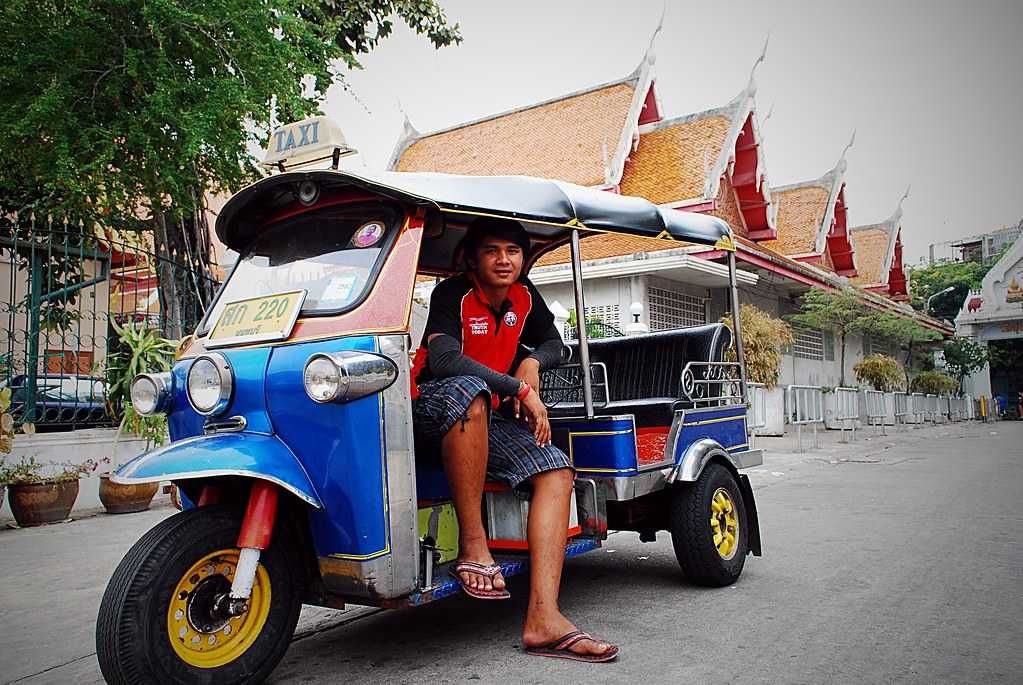Are you planning a trip to Thailand and wondering how to navigate the country’s public transportation system? Well, you’re in luck because we have the ultimate guide for you! Thailand offers a wide range of options for public transport, from buses and trains to boats and tuk-tuks. No matter where you want to go, there’s a mode of transportation that can get you there. In this article, we’ll take a closer look at the various options available and provide you with all the information you need to know to make your travels smooth and hassle-free. So let’s dive in!
First up, let’s talk about the iconic tuk-tuks. These colorful three-wheeled vehicles are a popular mode of transport in Thailand, especially in bustling cities like Bangkok. Riding in a tuk-tuk can be a fun and adventurous experience, but it’s important to negotiate the fare before getting in, as they often don’t have meters. However, keep in mind that tuk-tuks are not the most practical option for long distances or heavy traffic areas.
If you prefer a more budget-friendly option, buses are a great choice. Thailand has an extensive bus network that covers both short and long distances. The buses are usually air-conditioned, comfortable, and reasonably priced. Just be prepared for some crowded buses during peak hours. Another thing to keep in mind is that bus schedules may not always be reliable, so it’s a good idea to give yourself some extra time when planning your journey.
For longer trips or if you want to explore beyond the city, trains are a fantastic option. Thailand’s railway system is well-developed and connects major cities like Bangkok, Chiang Mai, and Phuket. Trains offer a more spacious and comfortable ride, with different classes to choose from, including sleeper trains for overnight journeys. Plus, you’ll get to enjoy beautiful scenic views along the way. However, it’s advisable to book your train tickets in advance, especially during peak travel seasons.
In our comprehensive guide, we’ll cover many more modes of public transport in Thailand, such as boats, motorbike taxis, and the famous skytrain in Bangkok. We’ll provide you with tips and tricks to navigate these options efficiently, as well as information on ticket prices and safety precautions. So if you’re ready to explore the Land of Smiles, stay tuned for our ultimate guide to public transport in Thailand!
The Ultimate Guide to Public Transport in Thailand
Thailand is a vibrant and bustling country known for its rich culture, beautiful landscapes, and friendly people. When it comes to getting around, public transport plays a crucial role in ensuring that locals and tourists alike can conveniently explore the country. From the bustling capital city of Bangkok to the serene beaches of Phuket, there are various modes of public transport available to help you navigate this enchanting destination.
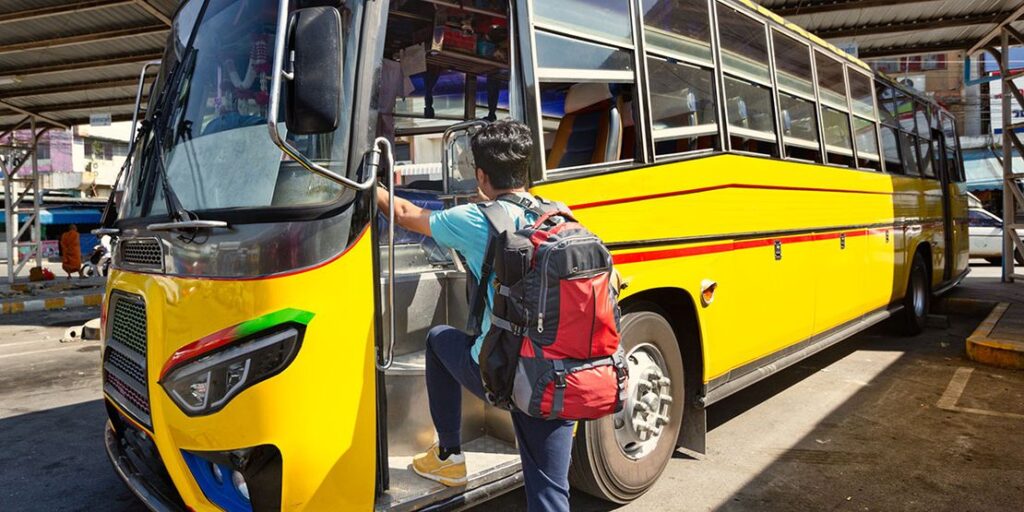
1. Overview of Public Transport in Thailand
1.1 Types of Public Transport
Thailand offers a wide range of public transport options to suit every traveler’s needs. From trains and buses to boats and taxis, you’ll find a variety of choices to get you from one destination to another. The most common types of public transport in Thailand include:
- BTS Skytrain: The BTS Skytrain is an efficient and modern elevated train system in Bangkok, providing quick transportation around the city.
- MRT Subway: The MRT Subway is another popular mode of transport in Bangkok, offering an underground network that connects major attractions within the city.
- Airport Rail Link: If you’re arriving in Thailand by air, the Airport Rail Link provides a convenient way to travel from Suvarnabhumi Airport to the city center.
- Bus Network: Thailand has a comprehensive bus network that covers both urban and rural areas, making it an affordable and accessible mode of transport.
- Taxis and Tuk-tuks: Taxis and tuk-tuks are readily available in major cities and tourist areas, offering a convenient way to get around. However, it’s important to negotiate fares and ensure that the meter is used in taxis.
- Chao Phraya Express Boat: If you’re exploring Bangkok’s riverside attractions, the Chao Phraya Express Boat provides a scenic and affordable mode of transport along the river.
1.2 Availability of Public Transport
Public transport is readily available throughout Thailand, but the availability and frequency of services may vary depending on the location and time of day. In major cities like Bangkok and Chiang Mai, public transport services operate from early morning until late at night. However, in more rural areas, the availability of public transport may be limited, and it’s advisable to plan your journeys accordingly.
1.3 Importance of Public Transport in Thailand
Public transport plays a vital role in Thailand’s transportation system, providing an affordable and convenient mode of travel for both locals and tourists. It helps alleviate traffic congestion, reduces the reliance on private vehicles, and contributes to a more sustainable and environmentally-friendly transportation network. Additionally, public transport allows visitors to experience the local culture and interact with the friendly Thai people.
2. Bangkok’s Public Transport System
Bangkok, the capital city of Thailand, boasts a comprehensive and well-connected public transport system. Here are some of the key modes of transportation available in Bangkok:
2.1 BTS Skytrain
The BTS Skytrain is one of the most popular and efficient ways to travel around Bangkok. With two lines, the Sukhumvit Line and the Silom Line, the BTS Skytrain covers major areas in the city, including shopping districts, business centers, and tourist attractions. The trains are clean, air-conditioned, and equipped with English signage, making it easy for visitors to navigate the system.
2.2 MRT Subway
The MRT Subway complements the BTS Skytrain system by providing underground transportation in Bangkok. With its blue line and purple line, the MRT Subway connects various parts of the city, including key locations such as Chatuchak Market, Hua Lamphong (the main train station), and Sukhumvit Road. The MRT Subway is an excellent choice for traveling to areas not covered by the BTS Skytrain.
2.3 Airport Rail Link
If you’re arriving in Bangkok by air, the Airport Rail Link offers a convenient and hassle-free way to reach the city center. With its express and city line services, the Airport Rail Link connects Suvarnabhumi Airport to major transportation hubs in Bangkok, such as Phaya Thai and Makkasan stations. The trains are comfortable, affordable, and equipped with luggage storage compartments.
2.4 Bus Network
Bangkok’s bus network is extensive and covers almost every corner of the city. There are both air-conditioned and non-air-conditioned buses available, catering to different budget preferences. While buses can be crowded during peak hours, they offer a more affordable mode of transport compared to other options. It’s important to note that bus routes and schedules may vary, so it’s advisable to check the information at bus stops or online before your journey.
2.5 Taxis and Tuk-tuks
Taxis and tuk-tuks are readily available in Bangkok and offer a convenient way to travel, especially when visiting attractions in areas not covered by the BTS or MRT. Taxis in Bangkok are metered, but it’s important to ensure that the driver uses the meter or agree on a fare before starting your journey. Tuk-tuks, on the other hand, are iconic three-wheeled vehicles that can be negotiated for a fare, but it’s always a good idea to agree on the price beforehand.
2.6 Chao Phraya Express Boat
The Chao Phraya Express Boat provides an enchanting way to explore Bangkok’s riverside attractions. The boats operate along the Chao Phraya River, with various piers located near popular landmarks such as Wat Arun and the Grand Palace. The boats are affordable, and you can choose between the tourist boat, which stops at major attractions, and the local boat, which is used by residents for daily commutes.
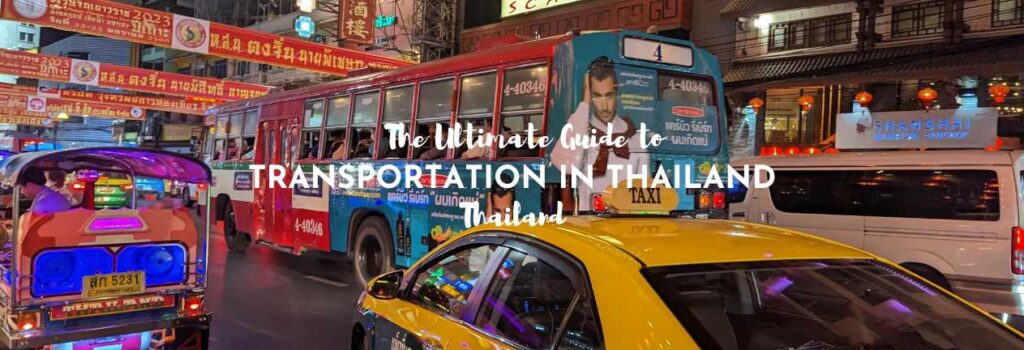
3. Public Transport in Other Major Cities
While Bangkok may be the most well-known city in Thailand, there are several other major cities that offer a variety of public transport options:
3.1 Chiang Mai
Chiang Mai, located in northern Thailand, has an extensive public transport system that includes red songthaews (pickup trucks with seating in the back), tuk-tuks, and motorbike taxis. The red songthaews operate on fixed routes and are the most common mode of transport for getting around the city. Additionally, Chiang Mai has its own version of the Chao Phraya Express Boat called the Mae Ping River Cruise, which offers a unique way to explore the city.
3.2 Phuket
Phuket, a popular beach destination in Thailand, offers public transport options such as buses and taxis. The bus network in Phuket covers most of the major tourist areas, including Patong Beach and Phuket Town. Taxis are also widely available, but it’s important to negotiate the fare before starting your journey. Additionally, motorbike taxis and tuk-tuks can be found in Phuket, providing a convenient way to navigate the island.
3.3 Pattaya
Pattaya, known for its vibrant nightlife and beautiful beaches, has a comprehensive public transport system that includes baht buses, motorbike taxis, and songthaews. Baht buses, which are converted pickup trucks with a covered seating area in the back, operate on fixed routes and are a popular mode of transport for both locals and tourists. Motorbike taxis and songthaews offer more flexibility in terms of routes and destinations.
3.4 Hua Hin
Hua Hin, located on the Gulf of Thailand, is a popular weekend getaway destination for both locals and tourists. The city offers public transport options such as tuk-tuks, songthaews, and motorbike taxis. Taxis can also be found in Hua Hin, but they are less common than in other major cities. Additionally, Hua Hin has a reliable bus network that connects various attractions within the city.
4. Interprovincial and Long-Distance Transport
If you’re planning to explore other parts of Thailand or travel between provinces, there are several interprovincial and long-distance transport options available:
4.1 Trains
Trains are a popular and comfortable mode of transport for long-distance journeys in Thailand. The State Railway of Thailand operates an extensive rail network that connects major cities and tourist destinations. The trains vary in class and comfort level, with options ranging from ordinary and rapid trains to luxurious overnight sleeper trains. Traveling by train allows you to enjoy scenic views of the countryside and experience a different side of Thailand.
4.2 Buses
Buses are another convenient and affordable option for interprovincial and long-distance travel in Thailand. There are various bus companies that operate routes between cities and provinces, offering both standard and VIP buses. The VIP buses are more comfortable and provide amenities such as reclining seats, onboard toilets, and air conditioning. It’s advisable to book your bus tickets in advance, especially during peak travel seasons.
4.3 Minivans
Minivans are a popular choice for short to medium-distance journeys within Thailand. They are smaller than buses and offer faster travel times, making them a preferred mode of transport for those who want to reach their destination quickly. Minivans operate on fixed routes and are available at transportation centers and bus terminals. However, it’s important to note that minivans can be crowded, so it’s advisable to book your seat in advance.
4.4 Ferries
Thailand is known for its picturesque islands, and ferries are the primary mode of transport for reaching these idyllic destinations. Whether you’re planning to visit Koh Samui, Phuket, or the Phi Phi Islands, there are numerous ferry services available to transport you across the azure waters. Ferry services may vary depending on the season and demand, so it’s advisable to check the schedules and book your tickets in advance.

5. Public Transport Etiquette in Thailand
When using public transport in Thailand, it’s essential to be mindful of the local customs and etiquette. Here are some tips to ensure a smooth and respectful journey:
5.1 Cultural Considerations
Thailand is a country with deep cultural traditions, and it’s important to show respect for local customs and beliefs. Avoid public displays of affection, dress modestly, and always remove your shoes when entering religious places or someone’s home.
5.2 Queueing
Thais value politeness and respect, so it’s important to wait in line when boarding buses or trains. Avoid pushing or cutting in front of others, and give priority to the elderly, disabled, or pregnant passengers.
5.3 Offering Seats
Thais are generally polite and may offer their seats to those in need, such as the elderly, pregnant women, or people with disabilities. If you see someone who requires a seat, it’s courteous to offer yours or make space for them.
5.4 Paying Fares
When using public transport, it’s essential to have the correct fare or change available. If paying by cash, hand the money directly to the driver or conductor. For systems that use smart cards, ensure that your card is topped up with sufficient credit before boarding.
5.5 Taking Luggage
If you have large or bulky luggage, it’s advisable to travel during off-peak hours to ensure that there is enough space on public transport. When boarding buses or trains, be considerate of other passengers and avoid taking up excessive space with your belongings.
6. Tips for Using Public Transport in Thailand
To make the most of your public transport experience in Thailand, consider the following tips:
6.1 Planning Routes
Before embarking on your journey, it’s advisable to plan your routes and familiarize yourself with the public transport network. Use online maps and transport apps to find the most efficient routes and schedules.
6.2 Cash vs. Smart Cards
Many public transport systems in Thailand accept both cash and smart cards. It’s worth considering using a smart card for convenience and potential discounts or promotions offered by transport operators.
6.3 Avoiding Peak Hours
To avoid overcrowding and long wait times, try to plan your journeys outside of peak hours. In major cities, peak hours typically occur during the morning and evening rush hours.
6.4 Safety Precautions
While public transport in Thailand is generally safe, it’s always important to stay vigilant and take basic safety precautions. Keep your belongings secure, be aware of your surroundings, and avoid displaying valuable items.
6.5 Checking for Updates and Closures
Public transport schedules and routes may be subject to changes or disruptions, especially during holidays or special events. It’s advisable to check for updates or closures before your journey to avoid any inconvenience.
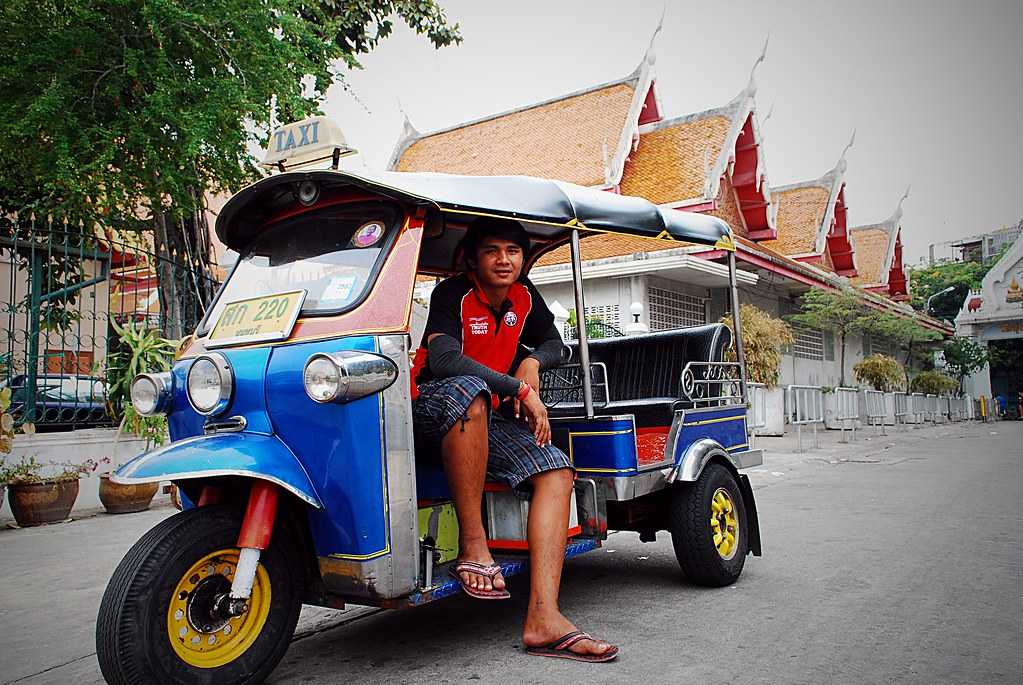
7. Challenges and Solutions of Public Transport in Thailand
Despite the convenience and availability of public transport in Thailand, there are several challenges that the country faces:
7.1 Traffic Congestion
Thailand’s major cities, particularly Bangkok, are notorious for traffic congestion. To alleviate this issue, the government is investing in infrastructure projects, such as expanding the BTS and MRT systems, and implementing traffic management initiatives.
7.2 Limited Accessibility
While public transport is well-developed in major cities, rural areas may have limited accessibility. The government is working to improve rural transport infrastructure and promote alternative modes of transport, such as community-based initiatives and shared transport services.
7.3 Safety Concerns
Thailand’s public transport system is generally safe, but incidents of pickpocketing and petty theft can occur. Travelers should stay attentive, keep their belongings secure, and avoid displaying valuables.
7.4 Environmental Impact
Transportation is a significant contributor to greenhouse gas emissions, and Thailand is taking steps to reduce its environmental impact. Initiatives such as promoting electric vehicles, promoting cycling, and expanding the use of eco-friendly fuels are being implemented to create a more sustainable transport system.
8. Government Initiatives to Improve Public Transport
The Thai government has implemented various initiatives to enhance the public transport system nationwide:
8.1 Infrastructure Development
The government is investing in the expansion and improvement of transport infrastructure, including the construction of new roads, railways, and airports, to accommodate the growing demand for public transport.
8.2 Integration of Systems
Efforts are being made to integrate different modes of transport, such as buses, trains, and boats, to provide seamless connections and improve the overall travel experience.
8.3 Promotion of Sustainable Alternatives
To reduce carbon emissions and promote sustainability, the Thai government is encouraging the use of alternative modes of transport, such as cycling and walking. Dedicated bike lanes and pedestrian-friendly infrastructure are being developed in major cities.
8.4 Public Awareness Campaigns
The government is launching public awareness campaigns to educate residents and tourists about the benefits of using public transport, including the reduction of traffic congestion and air pollution.
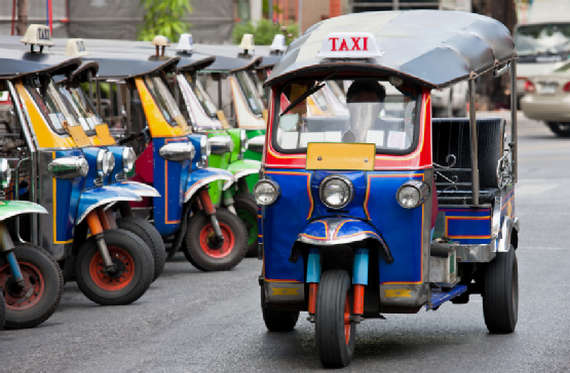
9. Alternatives to Public Transport in Thailand
While public transport is widely available in Thailand, there are alternative modes of transport for those who prefer more independence or flexibility:
9.1 Renting a Car
Renting a car is a popular option for those who prefer to have more control over their travel plans. Car rental services are available in major cities and tourist areas, allowing you to explore at your own pace. However, it’s important to familiarize yourself with local traffic laws and driving conditions.
9.2 Motorbike Taxi
Motorbike taxis are a common sight in Thailand, offering a convenient and quick mode of transport, especially in busy city areas or congested traffic. Motorbike taxis are easily identifiable by their brightly colored vests, and fares are usually negotiated based on the distance.
9.3 Grab (Ride-Hailing Service)
Grab, a Southeast Asian ride-hailing service similar to Uber, operates in major cities in Thailand. Using the Grab app, you can easily book a ride from your location and pay for the fare electronically. Grab offers various vehicle options, including cars, motorbikes, and even vans for larger groups.
9.4 Cycling
Cycling is a popular and eco-friendly way to explore Thailand, particularly in areas with dedicated bike lanes or scenic routes. Many cities offer bike rental services, and cycling tours are also available for those who want a guided experience.
10. Conclusion
Thailand’s public transport system provides a cost-effective and convenient way to explore this fascinating country. From the modern and efficient BTS Skytrain and MRT Subway in Bangkok to the rustic charm of songthaews and tuk-tuks in other cities, there are various modes of transport to suit every traveler’s needs. By following the local customs and etiquette and being aware of the challenges and solutions, you can navigate Thailand’s public transport system with ease, allowing you to experience the country’s diverse landscapes, vibrant culture, and warm hospitality. So hop on the next train, bus, or boat, and embark on an adventure of a lifetime in the Land of Smiles.
